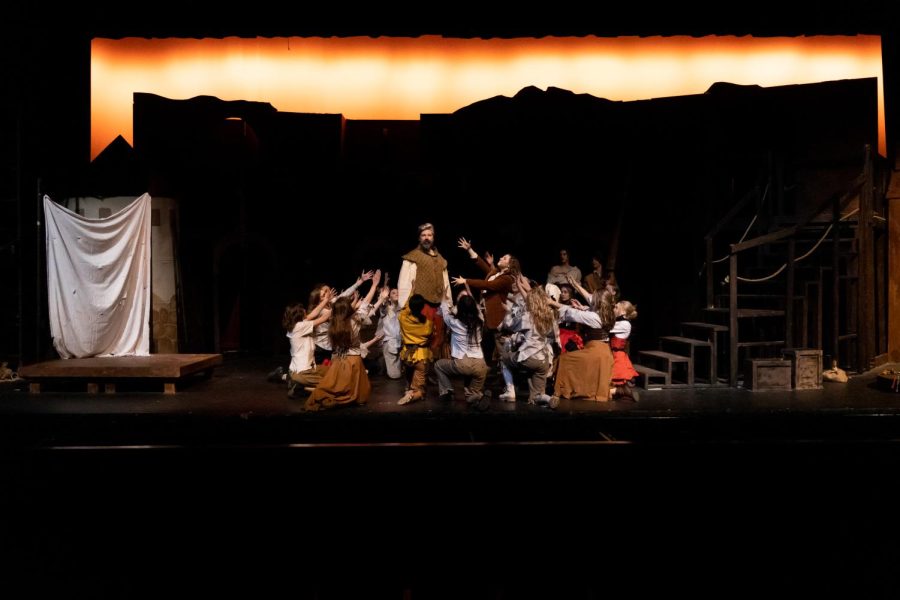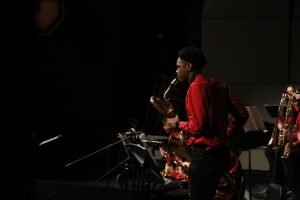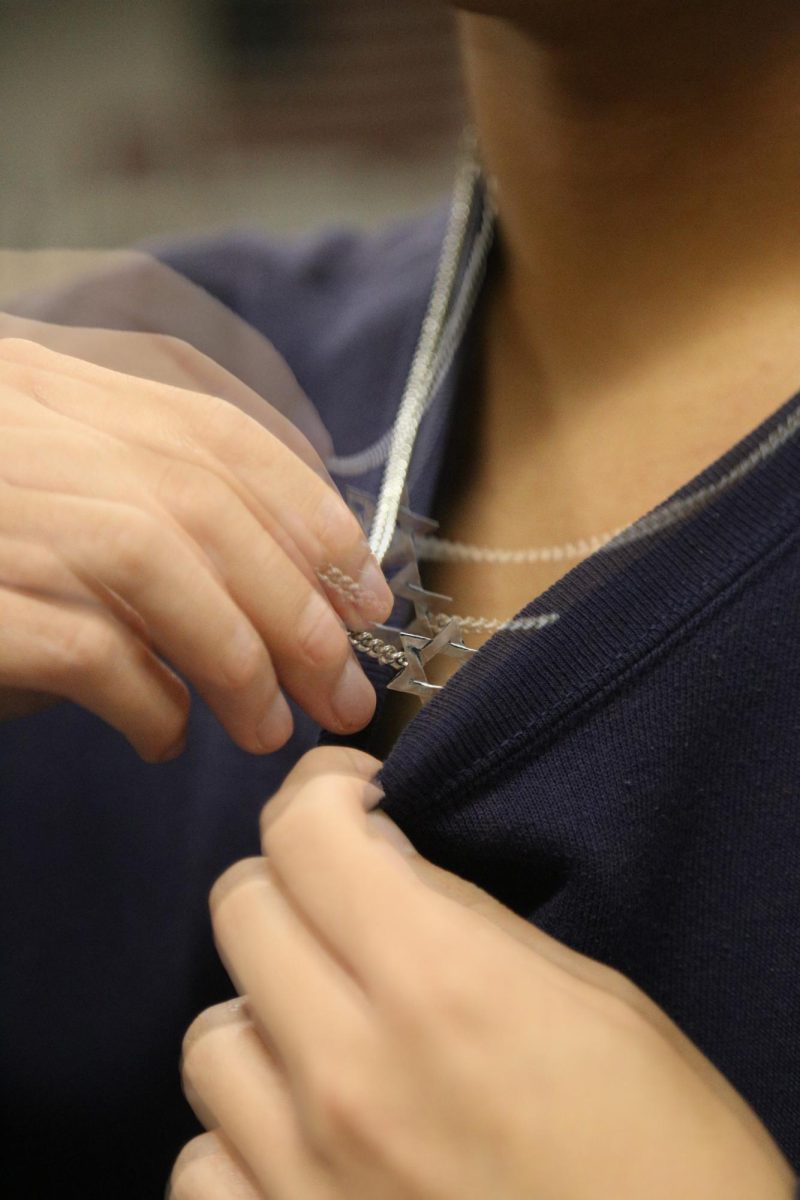Creek Theatre Runs Production of “The Man of La Mancha”
Courtesy of Alex Burkart
The Creek theatre program opened it’s seasonal musical, “The Man of La Mancha” on March 8. The production ran through March 11.
March 11, 2023
Creek’s theatre program closes their production of The Man of La Mancha today, March 11, after four days of running the musical. The Man of La Mancha details the story of Don Quixote (senior Hayden Noe), a “mad” knight who dreams of fighting dragons, ghouls, and wizards on a great quest, and how he finds love in a run-down inn.
As told by Miguel de Cervantes (also played by senior Hayden Noe), a failed tax collector and prisoner of the Spanish Inquisition in the late 1500s, the story of Don Quixote is widely celebrated in both world literature and Hispanic culture.
“There are very few shows that exemplify Hispanic culture, and I think our actors do a great job of honoring that culture during their performance which can display that culture to our audience and give them new information about Hispanic culture,” sophomore Bridget Brown, who plays a prisoner, said.
The musical is set in a classic ‘play-within-a-play’ structure, where Cervantes tells the story of Quixote to his fellow prisoners as he awaits his trial for foreclosing on a monastery. Each of the prisoners (ensemble), alongside Cervantes and his manservant, Sancho (senior Jact Diamant), portray parts of the story, where the near 45-person cast play horses, knights, doctors, flamenco dancers, and innkeepers.
“The most important part of this musical, in my opinion, is the journey that the ensemble takes. At the beginning of the show, they’re all very aggressive and frightening, but as Cervantes tells his story, you see them softening and getting more involved in the story,” Brown said. “This climaxes at the end when the prisoners are brought to tears by Quixote’s death. This is super important because it exemplifies the strong impact that this story has on these prisoners who have no hope for freedom.”
The Man of La Mancha, set in Seville, Spain, is told through song and music, featuring a pit orchestra and multiple songs, most of which follow a distinct sound of the time period and location.
“Theatre [goers] love the extra element that the band brings, and the band really admires the show that the theatre program is able to put on,” senior pit percussionist Nathan Krause said. “As if that wasn’t enough, we also have great staff helping guide the student-led programs here.”
The pit orchestra, according to Krause, was much larger than usual, with 22 musicians, including band teacher Tim Libby.
“This is one of the largest pits we’ve ever had. Last year for our production of Mamma Mia!, we only had 6 people down in the pit,” Krause said. “I don’t like to think of it as my part, but rather the whole pit. We really provide something special together, not individually.”
The production cycle for The Man of La Mancha lasted from early January to just before the musical opened on Wednesday. Construction and fly crews worked together to construct a full set, a building used simultaneously as a prison and inn, and props and costume crews ensured that actors would be dressed in the correct attire for the time period.
“I definitely think the set added to the ambiance. It really transports you to a different world. The main structure with the second story was our biggest piece and the most important,” senior production manager Karter LaBarre said. “It made the audience envision the places the actors were portraying.”
The set also utilized many smaller details, such as a trunk which hid props and costumes, a windmill with removable blades, scaffolding and ropes, and a rotating platform used to introduce Dulcinea (senior Eliana Yokomichi) during act one.
“We really just took the time period and grabbed colors like orange dress and browns to give the old Spanish clay look. We then built our whole structure based off of structures left from 1960s Spain,” LaBarre said. “Small details like the texture of the paint, and other things like the light fixtures and build style all helped to portray the time period. The open construction look with lots of wooden beams protruding showed [the period too.]”
Throughout the rehearsal process, the actors learned how to portray their characters perfectly. The cast was taught basic Spanish pronunciation by junior Claudia Naranjo, and fine tuned their blocking and vocals with the help of director Alex Burkart, choreographer Emily Fisher Burkart, and vocal director Sarah Branton.
“The experience of rehearsals for this show was really fun, we all learned the blocking really quickly which gave us a lot of time to run through things,” Brown said. “This let us clean the show [up] and perfect it so that we’d have a strong base going into tech [rehearsals.]”
Out of the three productions performed by Creek’s Troupe 1730 throughout the year, the spring musical is the most elaborate, with intricate set design, complex costumes and props, and student performed music. The musical showcased talent in many shapes and forms, not just giving a stage to student performers but also a slice of Spanish history.
“I think the celebration of Hispanic culture can impact the audience by offering them a different perspective from other shows that they can see,” Brown said.






















![In a recent surge of antisemitism nationally, many have pointed towards social media and pop culture as a source of hate. “Many far-right people have gone on [X] and started just blasting all their beliefs," Sophomore Scott Weiner said.](https://unionstreetjournal.com/wp-content/uploads/2023/10/antisemitism-popculture-2-1200x675.jpg)
